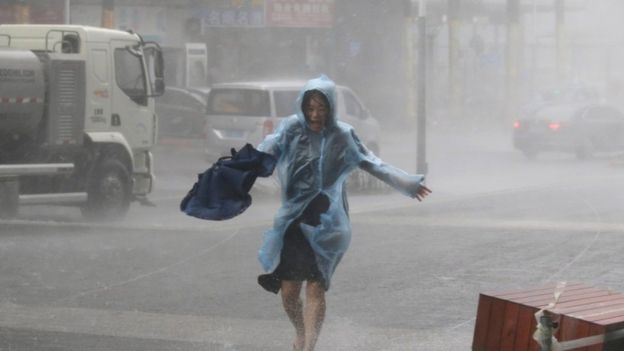A powerful storm which killed dozens of people in the Philippines is now making its way across southern China.
Typhoon Mangkhut is one of the most powerful storms to hit the region in decades.
Two people have been killed in the Chinese province of Guangdong, according to state media - more than 2.5 million people have been evacuated in Guangdong and on Hainan island.
In Hong Kong, the storm wrecked buildings and shut down the city.
The typhoon is now moving inland, and is expected to hit the Chinese regions of Guizhou, Chongqing and Yunnan later in the day.
In the Philippines, 33 miners have been confirmed dead and at least 29 are missing after a landslide hit a mining site in Itogon in Benguet province, according to local reports.
Search and rescue missions are continuing, and there are fears the death toll could rise above 100, said Itogon's mayor, Victorio Palangdan.
In Hong Kong, which was hit hard over the weekend, videos on social media showed apartments swaying in the wind, scaffolding crashing to the ground and commercial buildings with windows shattered.
Transport services have also been suspended, with flights cancelled, trains stopped and major roads closed.
The city managed to avoid serious casualties but now faces a difficult recovery as thousands still remain affected by flooding and travel disruptions.

Mangkhut is expected to gradually weaken into a tropical depression by Tuesday as it continues to move inland.
How has China been affected?
Typhoon Mangkhut made landfall on the Chinese coast near Jiangmen city on Sunday afternoon.
Officials put the number of injured in Hong Kong at more than 200.
Despite avoiding a direct hit, winds there reached more than 110mph and as water levels surged by almost 3.5m (12ft) in places.
Authorities had issued their maximum alert, warning residents to stay indoors and away from windows to avoid flying debris.
Source: BBC





